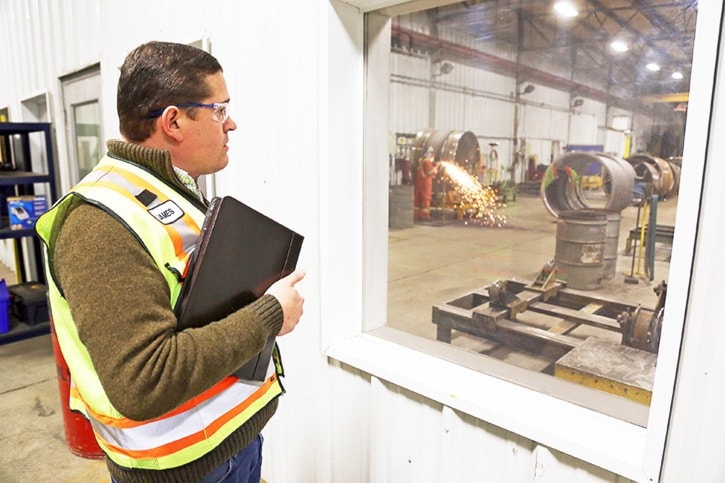A year after its Agassiz manufacturing facility won the WorkSafeBC innovations contest RIMEX, a wheel and rim assemblies maker, was awarded the Occupational Safety Standard of Excellence (OSSE) certification.
“This is something that we are very proud of, we have worked incredibly hard to realize the safest work environment we can for our staff, and this award validates this hard work,” said James Read, RIMEX’s Agassiz manufacturing operations manager about the recognition his company received last month.
The award—sponsored by the Food Industry Occupational Safety Association-Manufacturing Industry Occupational Safety Alliance (FIOSA-MIOSA)—recognizes a best practices approach cooperation with WorkSafeBC across the company.
The firm’s prior 2014 Agassiz site award resulted from an ergonomics and safety project that reduced manual lifting and noise levels at the local facility.
And for Read, it was a big part of the turnaround in RIMEX prioritizing safety and nurturing that culture in the workplace.
“I couldn’t walk to that door over there,” he said pointing across the shop floor where wheel rim lock rings are processed.
Not only was the area cluttered, but employees working on the lock rings were lifting the 100-pound objects 12 times in each process, 20 times per day.
Read shut the area down for two weeks and facilitated a value stream mapping exercise consulting with an engineer and staff to improve the processing of half and full lock rings.
 RIMEX trained the staff again and invested in new equipment after the analysis, resulting in a more streamlined method in which each ring is lifted only twice.
RIMEX trained the staff again and invested in new equipment after the analysis, resulting in a more streamlined method in which each ring is lifted only twice.
“We were very honoured to be considered for this award,” Read said. “We try to involve our employees in all decisions which affect them and their working conditions. This was truly an example of the kind of success you can achieve with a participatory approach.”
The rewards of such an inclusive approach are obvious and include “positive morale that derives from true teamwork, calculated empowerment and education,” Read noted.
The Agassiz facility was the site of a fatal workplace accident in 2011, when 19-year-old employee Dallas Hardy died from injuries he sustained toward the end of his shift.
“The people who work here are completely saddened by what happened and it does get discussed even now,” Read said. “But ultimately it identified shortfalls and we’ve strived over the last few years to put protecting procedures in place.”
As an organization RIMEX is never going to ignore what happened in the Agassiz facility, he said. In fact, that one event has transformed the firm into one that takes safety seriously.
In the press release about their awards last week, RIMEX Supply Ltd. stated that as it “flourishes and grows, it strives to improve productivity… but always puts safety first. It embraces and enforces that responsibility in protecting it employees, conducting its work and contributing to the community.”
While walking around the company’s shop floor, Read adds that the best place to look for proof of that improvement in responsibility is in its Workers’ Compensation Board (WCB) insurance premiums.
RIMEX’s have fallen almost 30 times over three to four years according to the manufacturing operations manager.
If safety wasn’t enough of a reason to make the improvements, there’s the significant return on investment those insurance savings pay out over the years.
Read explains yet more of his company’s advances, stopping between the loud noises of the factory around him.
RIMEX has implemented Safetysync software, adopted the principles of Lean Production, is subject to a rigorous safety audit, among other things.
And he points out that to make big improvements to safety happen in an inherently dangerous workplace, there are only so many things he and RIMEX can do in terms of protecting its employees through the hierarchy of hazard control.
“So a lot of that comes from the correct culture when it comes to staff,” Read said. “A willingness to work safely.”
“And I honestly believe that’s happening here now.”

